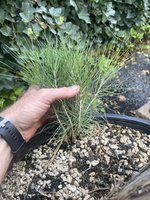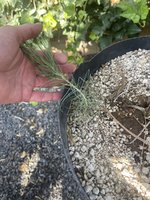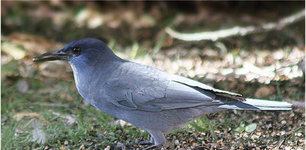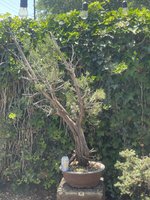Hartinez
Masterpiece
Growing up in New Mexico I’ve long admired the Piñon as meaningful tree in my life for the hours playing in and around them as a kid, to the fall seasons collecting, baking and chomping down on there delicious seeds. But now that I’m a fully obsessed bonsai practitioner they have an even more special place in my heart, especially after learning about one of their primary sources for proliferation.
Early on, I could not collect these trees or many for that matter. I killed every piñon I attempted. This was really just ignorance and a lack of understanding of collecting methods for these and most trees. In the last 2 years my skill at collecting not just piñon, but our other native shrub/tree, the one seed Juniper, as increased drastically. What I’ve noticed in those collections is that I often, more often than not at least, get either a single or a clump of piñon seedlings that sprout from the intact root ball I collect. I assumed that it was a feathered friend spreading the seeds from place to place, but in doing research found that the clumps and individuals are due almost solely to the piñon Jay.
I would start listing cool facts about them, but I’ll just post a link below so you can check out for yourself. I will also share a few of these examples, including a clump I dug and planted individually that I plan on cultivating for as long as it takes to make a great Bonsai from it.
With that said and a side note, it immediately gave me the idea of a great show display. Using a mature one seed juniper as the primary and much taller tree, then pairing that with a piñon pine clump (a young one) and a third part of the display being a cast bronze piñon Jay. I dream of these native displays and know I’ll get there sooner than later.

 magazine.wildlife.state.nm.us
magazine.wildlife.state.nm.us



Early on, I could not collect these trees or many for that matter. I killed every piñon I attempted. This was really just ignorance and a lack of understanding of collecting methods for these and most trees. In the last 2 years my skill at collecting not just piñon, but our other native shrub/tree, the one seed Juniper, as increased drastically. What I’ve noticed in those collections is that I often, more often than not at least, get either a single or a clump of piñon seedlings that sprout from the intact root ball I collect. I assumed that it was a feathered friend spreading the seeds from place to place, but in doing research found that the clumps and individuals are due almost solely to the piñon Jay.
I would start listing cool facts about them, but I’ll just post a link below so you can check out for yourself. I will also share a few of these examples, including a clump I dug and planted individually that I plan on cultivating for as long as it takes to make a great Bonsai from it.
With that said and a side note, it immediately gave me the idea of a great show display. Using a mature one seed juniper as the primary and much taller tree, then pairing that with a piñon pine clump (a young one) and a third part of the display being a cast bronze piñon Jay. I dream of these native displays and know I’ll get there sooner than later.

Pinyon jays & piñon pines - New Mexico Wildlife magazine
Pinyon jays and New Mexico go together like peanut butter and jelly. Or, in this particular case, mo










